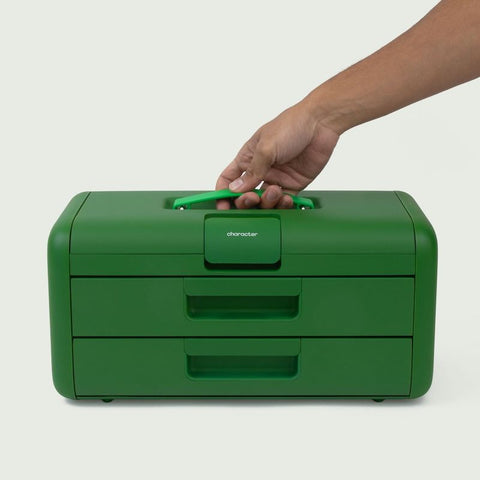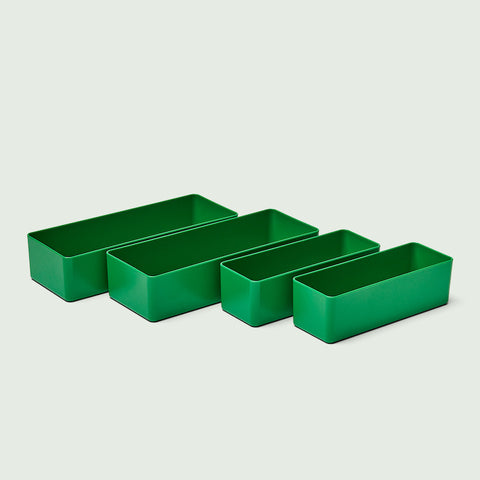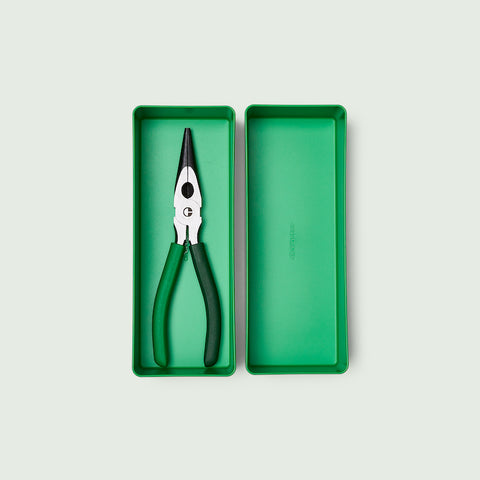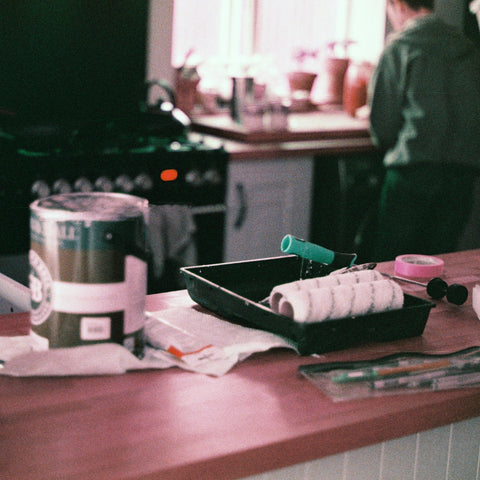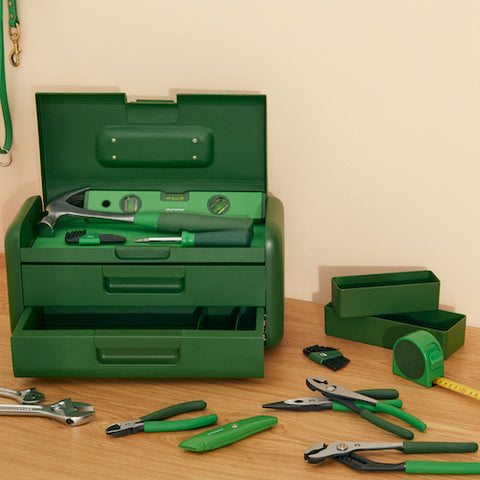
"Hall tree," "drop zone," "mudroom," — whatever you call it, entryway storage often comes at a premium. But creating your own can be easier than you think. With a little sweat equity, you can turn an otherwise dead space into something much more functional. Our CEO Alex turned a wasted corner of his home into a place to store shoes, coats and more.
Why Add A Hall Tree To Your Home?
Regardless of how much storage you have in your home already, adding a hall tree can provide many benefits:
-
Instant Organization: With a little creativity, you can double or triple the spots for shoes, coats, dog leashes, umbrellas and more so you’re less likely to lose anything.
-
Cleaner Floors: Gone are the days are tripping over shoes on your way in the door. With a designated place for everything, your floor space will free up. Not to mention, keeping shoes up and away will limit the dirt and grime the gets left behind.
-
First Impressions: Greet guests with a bit of character rather than a wave of stuff.
-
Routine Simplifier: Getting ready and out the door is so much easier when everyone know where their stuff is. Also having a place — like a bench — for you to sit and put on your shoes will make transitions easier for you and for kids.
-
Completely Customizable: The best part of making your own hall tree is that you can make it exactly what you need. From cubbies to hooks, you can add whatever you need to make the space work for you.
When building a hall tree, consider what you’ll store and utilize pre-built elements to maximize storage. You can add:
Bins and baskets
Bench
Hooks
Charging station
Mirror
Umbrella stand
Tray or mat for shoes
Mail & key organization
Shelves
Cabinets

There are several aspects of this project that you’ll need to build:
Bench and cubbies
Cabinets
Wall panels
Hooks
Shelves
How to Build A Hall Tree
Here's a step-by-step guide to building a simple bench with cubbies underneath—perfect for an entryway or to pair with a hall tree.
Materials:
(1) ¾" plywood sheet (for top, sides, and cubby dividers)
(1) 1x3 or 1x4 board for trim (optional, for a more finished look)
Wood screws or pocket hole screws
Wood glue
Wood filler
Sandpaper
Paint or stain
Tools:
Circular saw or table saw
Drill
Pocket hole jig (optional but helpful)
Measuring tape
Level
Clamps
Sander or sanding block
Paintbrush or roller

Step 1: Measure Your Space
Decide how wide and deep you want your bench to be. Common dimensions:
Width: 36"–48"
Height: 18" (standard bench height)
Depth: 14"–18"
Step 2: Cut Your Wood Pieces
From your plywood, cut:
(1) Bench Top – width x depth (e.g. 48" x 16")
(2) Sides – height x depth (e.g. 18" x 16")
(2–3) Vertical dividers – same height as side panels (e.g. 18" x 16")
Step 3: Drill Pocket Holes
Use a pocket hole jig to drill holes in the ends of the bottom panel and vertical dividers. This helps attach them cleanly to the sides and bench top.

Step 4: Assemble the Box
Attach the side panels to the bench bottom using wood glue and screws.
Add vertical dividers evenly spaced along the bottom—glue and screw them in.
Attach the bench top across the entire width, securing it to each divider and the sides.
Clamp pieces as you go to keep everything square.
Step 5: Sand Smooth
Fill all screw holes with wood filler. Once dry, sand everything smooth—especially edges and corners.
Step 6: Finish It Off
Paint or stain the bench in your desired color. Let it dry completely before using.
Cabinets
For the cabinets, you can certainly build them, but an easier and surprisingly affordable option is to buy unfinished cabinets from the hardware store. Attach these to the studs to secure them, add hardware and you’re good to go.
Wall Paneling
For a decorative touch, you can buy wall panels, such as beadboard and attach them to the wall. Using construction adhesive and nails, secure the panels to the wall to make the hall tree feel fully built-in and custom.
Extra Touches
For even more storage and to finish the look, utilize hooks and shelves. For Alex’s project, he used the LEVI Square Hooks from Plank Hardware. This makes the perfect place for hanging coats and even umbrellas. For the upper shelving, Alex purchased wood from Home Depot and brackets to secure it to the wall.

Adding a hall tree to your entryway is a project you can certainly take on with the right tools and a plan. It will add additional storage without taking up too much space — it may even utilize otherwise useless space in your home. If you take on this project, be sure to tag @character.home so we can see your handy work!




